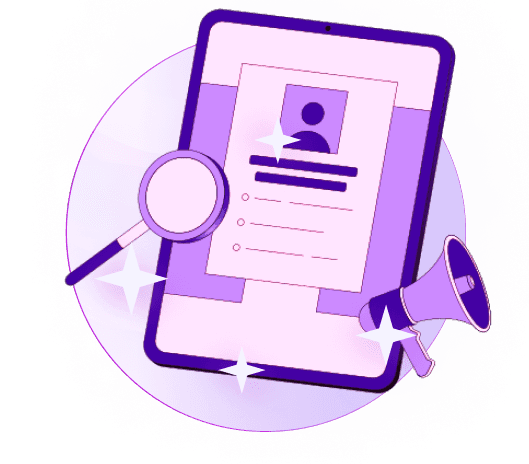Blogs
Articles

AI Sales Agents vs Chatbots: Key Differences in Customer Success [2025]
AI Sales Agents vs Chatbots reshape business responses to customer needs. Customer expectations have evolved - 81% want faster service with new technology, while 73% seek better customized experiences. Companies face mounting pressure to deliver outstanding customer experiences.
The distinction between AI sales assistants and traditional chatbots plays a vital role in customer success. AI agents make use of information from advanced AI models and generative technology. This creates live conversations based on customer data and behavior. Traditional chatbots follow more rigid paths. Many industries now adopt these AI-powered virtual agents to automate complex tasks.
This piece breaks down the main differences between chatbots and AI sales agents. You'll learn which solution might better align with your customer success goals in 2025 and beyond.
Understanding the Core Difference: AI Sales Agents vs Chatbots
AI Sales Agents and chatbots have fundamental differences that go well beyond basic functionality. These differences create a technological gap that affects customer interactions deeply.
Definition of AI Sales Agent and Chatbot
A chatbot represents a software application that simulates human conversation through text or voice interactions. Traditional chatbots work with predefined rules, decision trees, and scripted responses. They handle common questions and simple, routine tasks without human help. Modern chatbots might have some AI features but stay limited to specific areas.
An AI Sales Agent takes things further. This advanced AI-powered system combines sophisticated technologies like large language models (LLMs), natural language processing (NLP), and machine learning. It understands context, learns from each interaction, and makes decisions on its own. These virtual agents analyze customer data, handle complex tasks, and get better at their job over time.
Is a chatbot AI? Clarifying the overlap
People often mix up chatbots and AI because the terms keep evolving. Many chatbots don't actually use artificial intelligence. Rule-based chatbots follow fixed scripts and preset workflows. They work like simple "if-then" systems with little room for flexibility. These bots spot keywords in questions but can't grasp context or handle unique cases.
Some chatbots do have machine learning features, but their original programming still holds them back. The real difference shows up in learning ability. Traditional chatbots stay static, while true AI systems keep learning and improving through machine learning.
Virtual agent vs chatbot: Where the line is drawn
Virtual agents' capabilities and adaptability set them apart from chatbots. Industry research shows that virtual agents remember context across conversations and deliver consistent experiences. Chatbots often forget what was discussed earlier. AI agents can think through problems instead of just matching keywords to answers.
Virtual agents excel at understanding complex requests through:
Dynamic reasoning versus static responses
Continuous learning versus predefined rules
Autonomous decision-making versus scripted flows
Sales teams now choose AI agents more often because they need tools that offer personalized service and understand context. This shift happens because AI agents' abilities far surpass traditional chatbots' limitations.
Capabilities and Limitations in Real-World Use
AI Sales Agents vs Chatbots show clear differences in their operations through four key areas that shape how they deal with customers and deliver business results.
Task Handling: Scripted Flows vs Autonomous Execution
Traditional chatbots work like sophisticated phone menus with preset decision trees and scripted responses. They do well with common questions and can handle simple tasks like tracking orders. But they hit a wall with unexpected questions outside their scripts, which often leads to dead-end conversations.
AI sales agents take a different approach. They can plan and execute tasks with minimal interruptions. These systems break big goals into smaller, manageable pieces and work smoothly on platforms of all types. A customer service AI agent might study past support tickets, give customized responses, or automate complex tasks like processing refunds—all while keeping the conversation natural.
Context Awareness: Static Responses vs Dynamic Reasoning
These technologies differ greatly in how they understand context. Chatbots use simple lookup processes and treat each question as standalone without remembering previous exchanges. Questions that need subtle understanding often stump them, and they might contradict themselves or miss important context.
AI agents shine with their contextual awareness that helps them:
Remember everything in conversations
Pick up emotional hints and respond with empathy
Change their tone based on how customers feel
This makes their interactions meaningful and connected rather than choppy exchanges.
Learning Ability: Predefined Rules vs Continuous Adaptation
Rule-based systems stay unchanged unless someone updates them manually. They give the same responses no matter what feedback they get. Even chatbots with simple machine learning need lots of training to process requests correctly.
AI agents learn as they go. They spot successful conversation patterns and fine-tune their responses to make customers happier. Their machine learning algorithms study data patterns, which helps them predict and meet user needs better over time.
Scope of Knowledge: Narrow Domain vs Cross-Platform Intelligence
Knowledge scope sets these technologies apart. Chatbots work within limited knowledge areas about specific products or services. They only know what they learned during training.
AI agents can access huge language models, live data, and many external sources. This big knowledge base lets them think across different fields, make logical connections, and create new insights by combining information in creative ways.
Customer Success Impact: Which Drives Better Outcomes?
The comparison between AI sales agents and traditional chatbots shows how they affect customer success and satisfaction differently. These technologies take very different approaches to customer interaction and problem-solving, which affects conversion rates and customer loyalty.
Response Quality: FAQ Handling vs Personalized Resolution
Traditional chatbots are great at giving consistent answers to common questions. They work well for basic questions about pricing, store hours, or return policies. Notwithstanding that, they can't handle unique questions beyond their programming.
AI sales agents take a different approach by giving personalized responses based on customer data and past interactions. Companies that use AI agents report they can solve up to 86% of customer questions with tailored responses. This cuts reply times from 30 minutes to just seconds. AI agents also know how to:
Handle multi-step requests like order status checks
Spot shipping delays and offer compensation right away
Create solutions based on customer history and mood
Speed and Accuracy in Sales Conversations
When it comes to speed, chatbots give instant answers. MessageMind's platform cuts first response times by up to 37%. AI agents might need more time to create responses but are more accurate in complex situations.
One AI agent system cut average response times from 11 minutes to about 2 minutes. It handled 75% of all customer chats with satisfaction scores matching human agents.
AI for Sales Calls: Real-time Assistance vs Static Scripts
AI brings game-changing advantages to sales calls compared to static scripts. Modern AI sales tools offer real-time coaching that gives sales reps instant feedback during conversations. Research shows 47% of sales teams now use AI for call coaching.
AI-powered coaching tools make cold calling more effective through smart script changes and quick feedback. These systems look at thousands of calls to find performance patterns and give evidence-based insights that help sales managers improve their training programs.
Customer Satisfaction Metrics: AI Agent vs Chatbot
Customer satisfaction scores tell an interesting story about these technologies. Survey data shows 68% of customers solve their problems with AI chatbots compared to 79% with human agents. AI chatbots score 3.9 out of 5 in CSAT ratings, while human agents score 4.5.
The most telling insight comes from businesses using AI-powered solutions from Persana.ai. They found the best approach combines both technologies - chatbots handle routine questions while naturally passing complex issues to AI agents. This hybrid model has cut resolution time by 52% and boosted repeat purchases by 15%.
Implementation, Cost, and Scalability Considerations
AI solutions need more than just good capabilities to work well. Let's get into the key operational differences that affect your business decisions when you choose between these technologies.
Setup Time: Coding a Chatbot vs Onboarding an AI Agent
Traditional chatbots deploy quickly, especially when you have no-code or low-code platforms that lower technical barriers. Teams can implement these solutions faster with minimal technical work. AI agents need more upfront investment because of their complexity, data integration requirements, and sophisticated learning models.
AI agents for customer service actually take less time to train on natural language inputs, despite their higher complexity at first. They work faster to implement and launch than chatbots, which need training on hundreds of utterances to understand requests. They also skip the rule-based dialogs and extensive setup usually needed to guide conversations.
Maintenance: Manual Updates vs Self-Learning Systems
The biggest difference shows up in day-to-day maintenance needs. Chatbots with scripted conversation workflows need regular manual updates. Companies that manage hundreds of conversation workflows usually need several full-time staff members to keep things running smoothly. Staff members write new content, improve training questions, and review conversations to find gaps in capabilities.
AI agents work more like actual team members rather than simple tools. They look at data continuously to spot gaps and adapt their responses automatically based on changes in your knowledge base. This removes the need to manually update tags or conversation flows. You still need to review customer interactions during AI agent training, but you don't need manual tweaks to make necessary changes.
Scalability: Handling Volume and Complexity
AI agents excel in enterprise ecosystems when it comes to scaling. They process huge amounts of data and run multiple workflows at once. These agents handle more complex workflows as data volumes grow, without slowing down.
Chatbots scale better with many conversations that have limited scope because of their preset capabilities. Adding new features usually means more manual updates or reprogramming. Persana.ai offers adaptable AI agent solutions that grow with your business needs.
Security and Compliance: Data Access and Control
Security needs vary by a lot between these technologies. Chatbots are usually easier to protect against cybersecurity threats because of their narrow scope. They handle less sensitive data typically, but still need proper security measures.
AI agents need stronger security measures because they access more systems. Organizations using AI agents must create complete data policies for retention, access controls, and secure destruction protocols. Situations that need strict regulatory compliance require even stronger safeguards because of this expanded access.
Conclusion
AI sales agents and chatbots have differences that go way beyond their basic functions. Our comparison shows how AI agents utilize advanced language models and machine learning. These agents provide dynamic, context-aware interactions and improve continuously. Traditional chatbots deploy faster but stay restricted by predefined rules and static responses.
Cost and setup factors play a vital role. No-code platforms help deploy chatbots quickly, but they require constant maintenance. AI agents need more money upfront but learn and maintain themselves through continuous learning. This difference matters more as customer service operations grow.
Each technology comes with its own security needs. AI agents need reliable security measures because they access broader systems, especially for companies with sensitive customer data. Chatbots pose fewer security risks due to limited functionality but produce basic results.
Most businesses benefit from using both technologies together. Persana.ai shows how this combined approach cuts resolution times by 52% and boosts repeat purchases by 15%. These results prove the power of strategic AI deployment.

Create Your Free Persana Account Today
Join 5000+ GTM leaders who are using Persana for their outbound needs.
How Persana increases your sales results
One of the most effective ways to ensure sales cycle consistency is by using AI-driven automation. A solution like Persana, and its AI SDR - Nia, helps you streamline significant parts of your sales process, including prospecting, outreach personalization, and follow-up.



